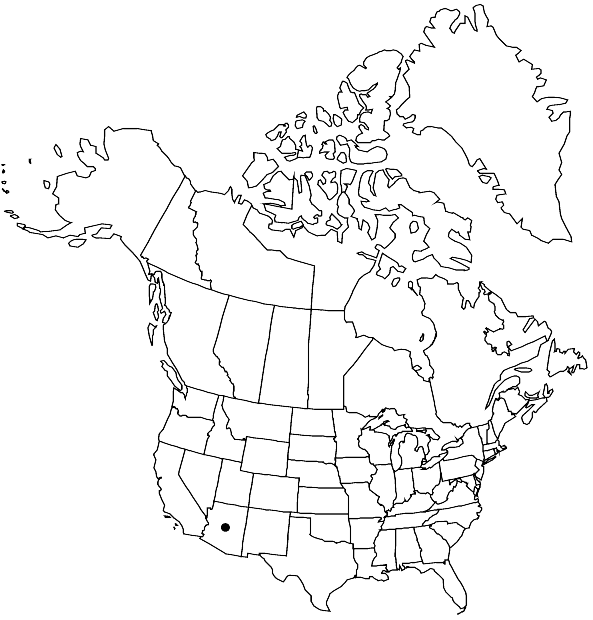Barbula orizabensis
Linnaea 40: 638. 1876,.
Stems 1.5–2.5 cm. Leaves firm when wet, long-ligulate to broadly lanceolate from an oblong base, 1.5–2 mm, base oblong but not strongly sheathing, margins recurved or revolute to apex or nearly so, apex broadly acute to rounded; costa excurrent as a stout mucro, abaxial costal surface with scattered solid papillae, hydroids present; distal laminal cells firm-walled, quadrate, 7–9 µm wide, 1: 1, papillose. Specialized asexual reproduction by spheric or occasionally elliptic gemmae on stalks in leaf-axils, 30–35 µm long. [Perichaetial leaves weakly differentiated, antheridiate plants long-stemmed. Seta 0.9–1.5 cm. Theca 1–2.5 mm. Spores 8–11 µm.]
Habitat: Disintegrating rock
Elevation: moderate to high elevations (1000-2000 m)
Distribution

Ariz., Mexico, West Indies
Discussion
In the flora area, Barbula orizabensis is known only from Santa Cruz County, Penna Dam, I. Haring 11984, 15 Feb. 1957 (CANM). This species replaces B. unguiculata at approximately the Mexican border. The presence of gemmae is apparently constant and will best distinguish it from the latter species.
Selected References
None.